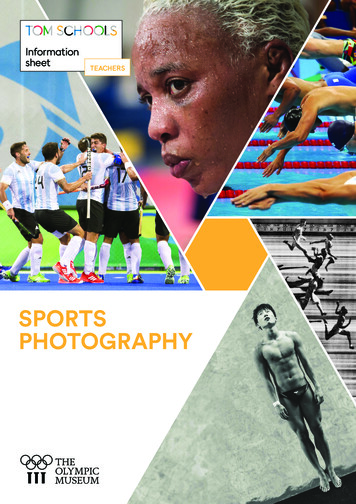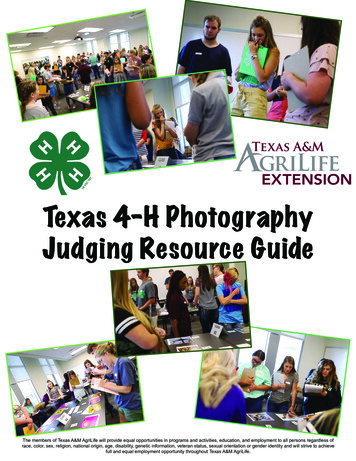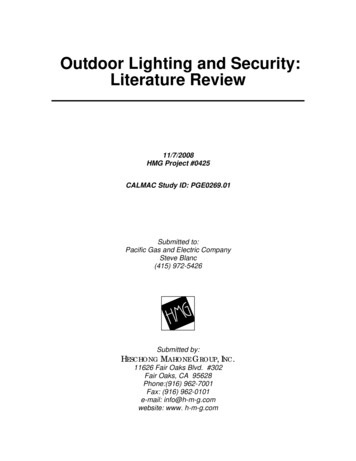
Transcription
Lighting inPhotography
Why does lighting matter? Light changes- indoors and outdoors Lighting can affect the feeling of aphotograph or the look of the subject Understanding and controlling the lightingof your subject gives you more freedom tocraft your images
Direct light Direct light is highcontrast. It createsharsh shadowswith sharp edges.– An example of directlight is the sunlight ona sunny day or a flashDorothea Lange. Woman of theHigh Plains. 1938.
More direct light images by Dorothea Lange.
Diffused light Diffused light is lowin contrast. Theshadows are weakor even absent.– An example of diffusedlight is an overcast dayor light bounced off ofreflectors or umbrellasPhoto by Julia MargaretCameron.
Georgia O’Keefe byAlfred SteiglitzPhoto by Annie Leibovitz
Directional Diffused Light Directionaldiffused light hasmoderate contrastand shadows.– An example is lightfrom a window on ahazy day or lightfrom a flashbouncing off a wall orreflectorPhoto by Miguel Gandert.
Photo by Julia MargaretCameronAlfred Stieglitz, by Edward Steichen
Setting Up Portrait Lighting There are numerous ways to set upportrait lighting to achieve different effects. In general, photographers are interested inusing different types of light to minimize ormaximize shadows to create interesting orflattering light for their subjects.
Types of Lights Main light or key light Fill light Back light Catch light
The Main Light The main light is the main source of lightor the brightest light. The main light creates the main shadowson your subject and can be moved aroundto create different effects or softened byadding additional lights of the sameintensity, a fill light, or using reflectors.
More on the Main Light Highlights on the forehead, the uppercheeks, the chin, and along the bridge ofthe nose created by the main light give life,brilliance, and form to a portrait, and thequality of these highlights are controlledby the main light distance.
Where to Place the Main Light? To determine themain light distance,start with the lightabout 4 feet fromthe subject andabout 2 feet abovethe subject's eyelevel. The light should beabout a 45-degreeangle to the lensaxis.
Fill Light The fill light dims shadows created by themain light. Fill lights should not overpower mainlights; they should raise the level of light inshadowed areas to allow for more detail. Fill lights can be used outdoors or indoors. Reflectors or bounce cards can also beused as fill lights
Where to Place the Fill Light? The fill light isnormally placedslightly above thesubject's eyelevel and lowerthan the mainlight on theopposite side ofthe camera fromthe main light andnear the cameralens axis.
Back Light The back light creates a bright line aroundthe edge of the object, to help visuallyseparate the object from the background.
Three-Point LightingThree-point lighting is a very common lighting setup used inphotography and film. By using three separate light sources, thephotographer can illuminate the shot's subject (such as a person)however desired, while also controlling (or eliminating entirely) theshading and shadows produced by direct lighting.
Catch Light The term catch light isused to describe eitherthe highlight in asubject's eye from alight source, or the lightsource itself. Adding a catch lightcan help draw attentionto the subject's eyes,which may otherwiseget lost among otherelements in the scene.
a sunny day or a flash Dorothea Lange. Woman of the High Plains. 1938. More direct light images by Dorothea Lange. . from a flash bouncing off a wall or reflector Photo by Miguel Gandert. Photo by Julia Margaret . Reflectors or bounce cards can also be used as fill l











